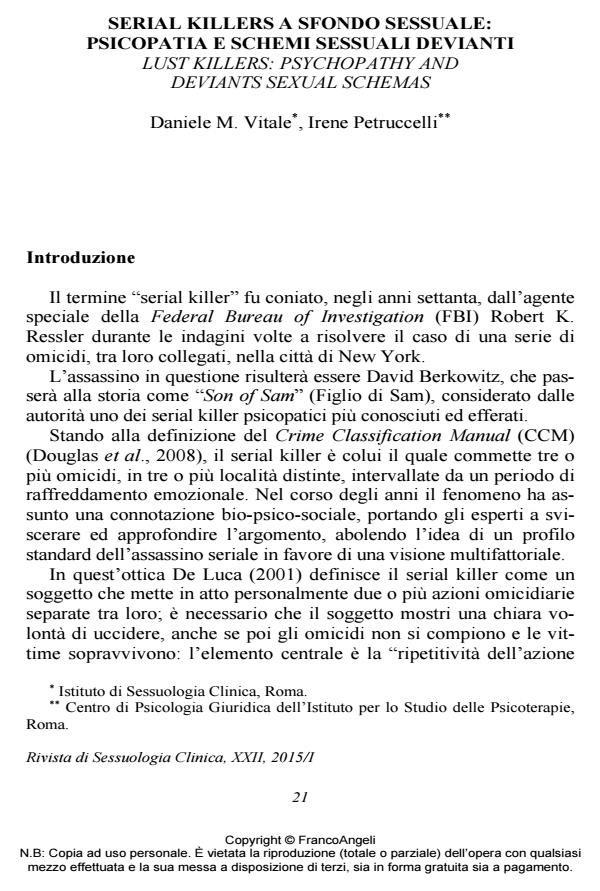Lust killers: psychopathy and deviants sexual schemas
Journal title RIVISTA DI SESSUOLOGIA CLINICA
Author/s Daniele M. Vitale, Irene Petruccelli
Publishing Year 2015 Issue 2015/1
Language Italian Pages 26 P. 21-46 File size 108 KB
DOI 10.3280/RSC2015-001002
DOI is like a bar code for intellectual property: to have more infomation
click here
Below, you can see the article first page
If you want to buy this article in PDF format, you can do it, following the instructions to buy download credits

FrancoAngeli is member of Publishers International Linking Association, Inc (PILA), a not-for-profit association which run the CrossRef service enabling links to and from online scholarly content.
The phenomenon of lust killers has always attracted strong interest from the scientific community despite the lack of a copious literature on this topic. Over the years, the focus in this regard has found rich soil among the experts, who have presented the phenomenon as bio-psycho-social, since the personality of a serial killer can hardly be drawn within a single standard profile. The phenomenon has therefore also been described as multifactorial: not only mental aspects have been considered, but also psychosexual and developmental ones, all related to the serial murderer's life history. What has been universally recognized in these individuals is a significant deficit of empathy that would lead them to act in a brutal way just because unable to perceive the pain of the victim. This article aims to investigate and explain in depth the true nature of persons who commit crimes of sexual nature, that is not only the psychological factors, but also the developmental and environmental ones. In this respect, the Kleinian theories are an interesting food for thought on what are the sexual patterns accrued during child development. The inability of the lust killer to feel empathy towards the victim would, in some way, be associated with a missing developmental step: the one that brings the child to move from the partial to the total object.
Keywords: Serial killer, deviant sexual schemas, malignant narcissism, Gianfranco Stevanin, empathy deficit, part-object
Daniele M. Vitale, Irene Petruccelli, Serial killers a sfondo sessuale: psicopatia e schemi sessuali devianti in "RIVISTA DI SESSUOLOGIA CLINICA" 1/2015, pp 21-46, DOI: 10.3280/RSC2015-001002